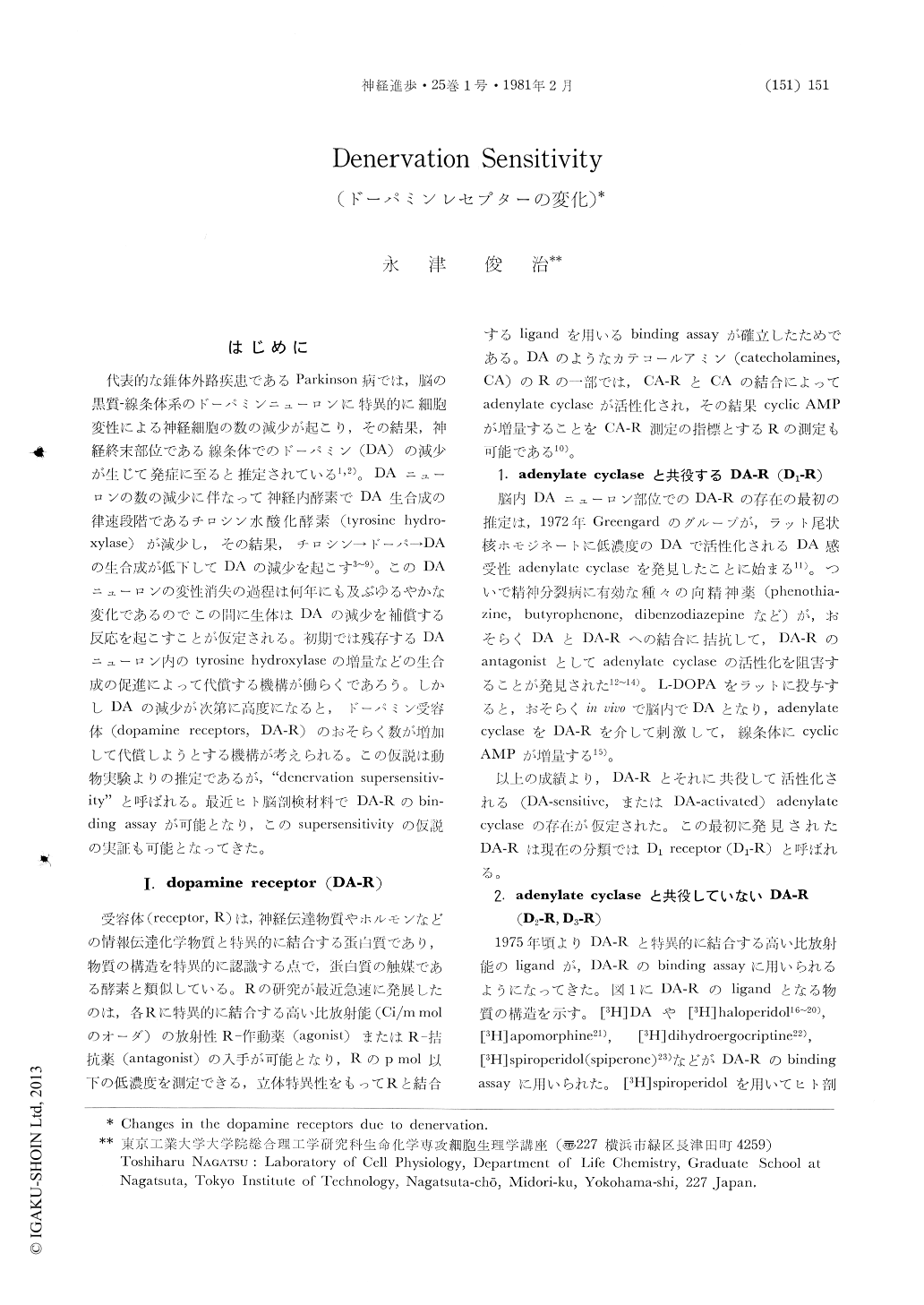Japanese
English
- 有料閲覧
- Abstract 文献概要
- 1ページ目 Look Inside
はじめに
代表的な錐体外路疾患であるParkinson病では,脳の黒質-線条体系のドーパミンニューロンに特異的に細胞変性による神経細胞の数の減少が起こり,その結果,神経終末部位である線条体でのドーパミン(DA)の減少が生じて発症に至ると推定されている1,2)。DAニューロンの数の減少に伴なって神経内酵素でDA生合成の律速段階であるチロシン水酸化酵素(tyrosine hydroxylase)が減少し,その結果,チロシン→ドーパ→DAの生合成が低下してDAの減少を起こす3〜9)。このDAニューロンの変性消失の過程は何年にも及ぶゆるやかな変化であるのでこの間に生体はDAの減少を補償する反応を起こすことが仮定される。初期では残存するDAニューロン内のtyrosine hydroxylaseの増量などの生合成の促進によって代償する機構が働らくであろう。しかしDAの減少が次第に高度になると,ドーパミン受容体(dopamine receptors,DA-R)のおそらく数が増加して代償しようとする機構が考えられる。この仮説は動物実験よりの推定であるが,"denervation supersensitivity"と呼ばれる。最近ヒト脳剖検材料でDA-Rのbinding assayが可能となり,このsupersensitivityの仮説の実証も可能となってきた。
Dopamine (D) receptors (R) in mammalian striatum are now classified into 3 subgroups (Greengard; Kebabian; and Seeman). D1-R is located post-synaptically and linked to dopamine-sensitive adenylate cyclasc. D2-R is also located post-synaptically, but is not linked to dopamine-sensitive adenylate cyclase, and has high affinity to [3H] spiperone or [3H] haloperidol. D3-R is located pre-synaptically in the nerve terminals of dopaminergic neurons (autoreceptor), is not linked to adenylate cyclase, and has high affinity for [3H] dopamine.

Copyright © 1981, Igaku-Shoin Ltd. All rights reserved.


